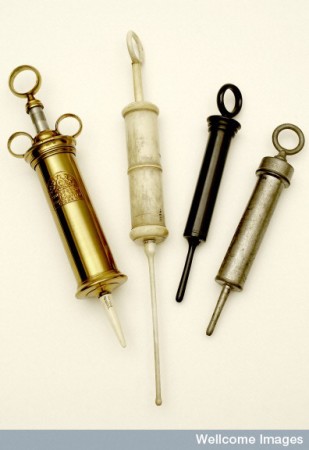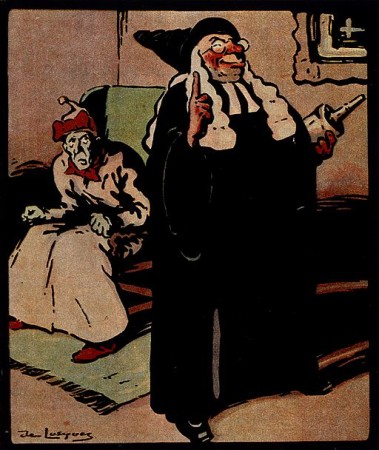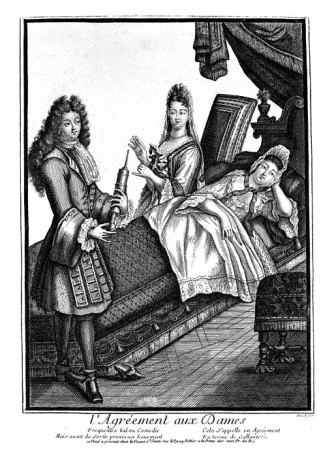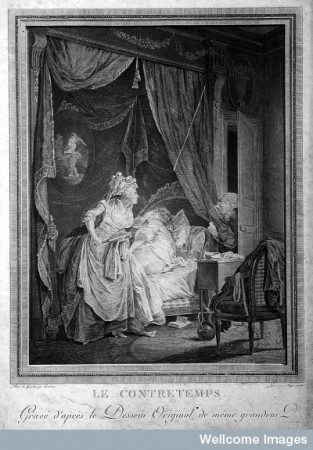I’m still deep in the midst of picture research for an upcoming book. In this blog post I wrote about the preponderance of pictures of physicians taking patients’ pulses, and in this blog post I posted a bunch of images of physicians examining patients’ urine. Here’s a picture that shows both at the same time.
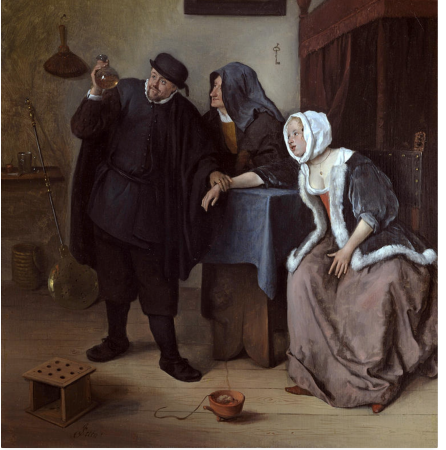
This is by artist Jan Steen, from the seventeenth century. I like the foot warmer in the foreground–you put coals in the crockery and set it under that little stool, and the whole thing can be shoved under your skirts to keep you warm and toasty while you embroider or churn butter or whatever.
Pulse- and urine-checks were about the extent of what highly-paid medieval and Renaissance physicians could do for their patients. Which is probably just as well, since they had pretty scant knowledge of anatomy, forbidden as they were by the Church to dissect bodies. Cutting into a living body was a job left to the less-exalted barber surgeons, who, besides performing services like blood-letting and amputation, could also shave you or give you an enema.
And that leads us to enemas. An enema is a way to introduce a medicine or a “cleansing” agent by means of injecting it up the butt. Enemas (also called clysters or glisters) were extremely popular in western European medicine for quite a few centuries. They’re still popular in Russia, reports my sister, who lives there. At the court of Louis XIV, enemas were thought to be good for your complexion and to keep the mind sharp. The king had thousands of them over his lifetime, sometimes as many as four a day. Certain pharmacists specialized in enemas, and hung huge pictures of butt-plungers outside of their shops. Poisoned enemas were used from time to time to dispatch enemies.
A quick search of “enemas in artwork” on wiki and at the Wellcome Library yields dozens of pictures. I’ll spare you the explicit ones, but here’s a sampling of pictures of, er, imminent enemas. (Say that five times fast.)
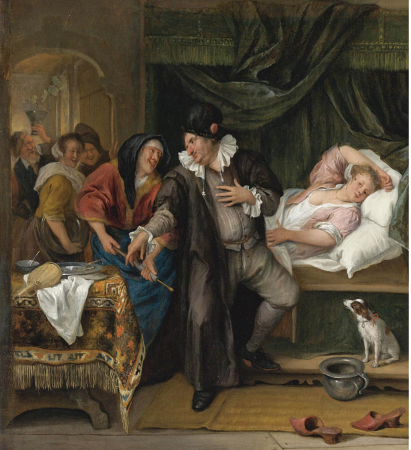
Another Jan Steen, showing another creepy doctor with a young female patient. Note the enema syringe in his assistant’s hand. Ew.
![V0010765 A young fashionable apothecary-surgeon(?) about to give a si Credit: Wellcome Library, London. Wellcome Images images@wellcome.ac.uk http://wellcomeimages.org A young fashionable apothecary-surgeon(?) about to give a sick wealthy lady an enema. Engraving by A. Bosse, 16--. By: Abraham BossePublished: [16--] Copyrighted work available under Creative Commons Attribution only licence CC BY 4.0 http://creativecommons.org/licenses/by/4.0/](https://www.sarahalbeebooks.com/wp-content/uploads/2015/07/edd6c23756eee34ae968ecb19614-450x353.jpg)
“A young fashionable apothecary-surgeon(?) about to give a sick wealthy lady an enema.” Note the servant on the left, who carries an easy chair (to “do one’s ease”). The chamber pot would sit inside it. Wellcome Library
